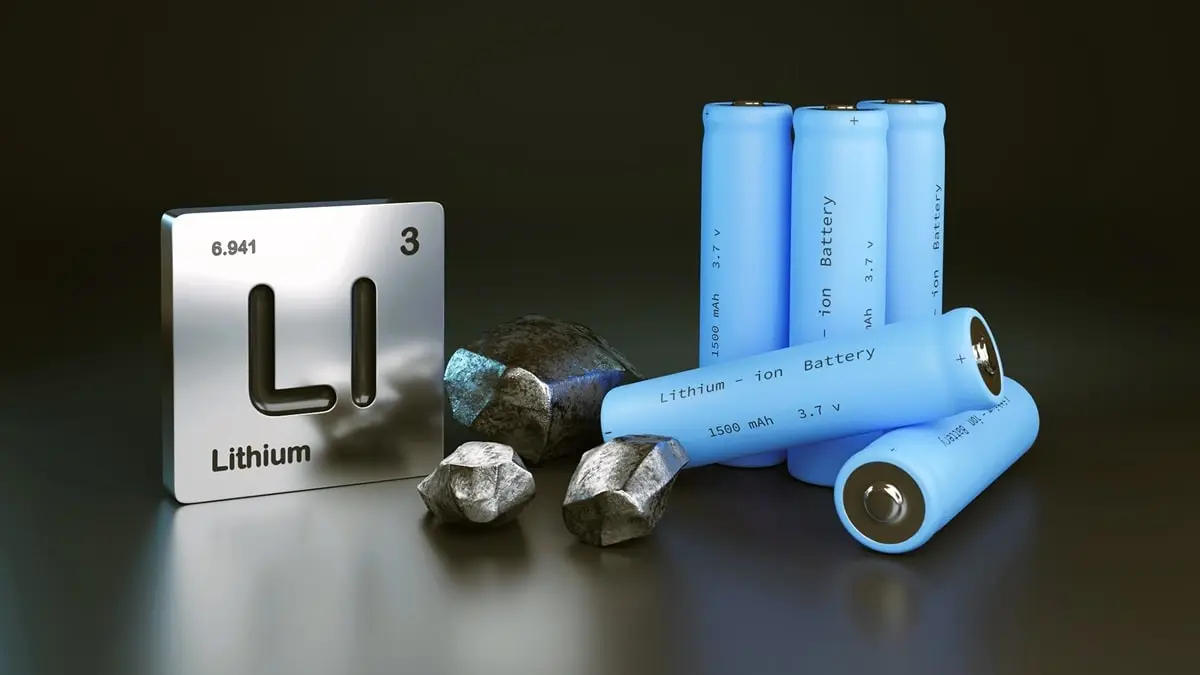Lithium-ion batteries are at the heart of many modern electronic devices and equipment’s, as it powers all sorts of devices, for instance, from smartphones to electric cars. Their popularity stems from their high energy density, long cycle life, and relatively low maintenance.

This blog post aims to provide a clear and straightforward explanation of lithium-ion batteries, covering their structure, working principles, advantages, and tips for care.
What Are Lithium-Ion Batteries? Basic Definition.
A lithium-ion (Li-ion) battery is a type of rechargeable battery that uses lithium ions as the primary component of its electrochemistry. These batteries are known for their high energy density, meaning they can store a lot of energy for their size, and for their ability to be recharged many times without losing significant capacity.
Compared to other tradition battery types it can store much more energy with almost no loss for a very long time, whereas traditional batteries start to lose their energy from day one.
Under best conditions a lithium-ion batteries last up to 5-10 year. Which is twice and thrice times more compared to any traditional battery. It is also lightweight and small in size.
Structure of a Lithium-Ion Battery.
Key Components:
Li-ion batteries are composed of several essential parts:
- Anode: The anode is typically made of graphite. During the charging process, lithium ions are stored in the anode. In charging, lithium ions move from the cathode to the anode.
- Cathode: The cathode is usually made of a lithium metal oxide, such as lithium cobalt oxide (LiCoO₂). During discharge, lithium ions move from the anode to the cathode.
- Electrolyte: This is a liquid or gel substance that conducts lithium ions between the anode and cathode. It contains lithium salts dissolved in an organic solvent.
- Separator: A thin, porous membrane that prevents direct contact between the anode and cathode while allowing lithium ions to pass through.
How Do Lithium-Ion Batteries Work?
Charging Process:
- Electric Current Application: When a Li-ion battery is connected to a charger, an electric current is applied, driving lithium ions from the cathode to the anode.
- Ion Movement: The lithium ions move through the electrolyte and pass through the separator to reach the anode.
- Storage in Anode: The anode stores these ions, resulting in a build-up of potential energy.
Discharging Process:
- Energy Demand: When the device powered by the battery is turned on, it creates a demand for energy.
- Ion Flow: Lithium ions flow from the anode back to the cathode through the electrolyte.
- Electricity Generation: This movement of ions generates an electric current that powers the device.
Advantages of Lithium-Ion Batteries.
High Energy Density:
Li-ion batteries can store a significant amount of energy in a small space, making them ideal for portable electronics like smartphones and laptops.
Long Cycle Life:
These batteries can be recharged hundreds to thousands of times before their capacity significantly decreases, making them cost-effective over the long term.
Low Self-Discharge:
Li-ion batteries have a low self-discharge rate, meaning they lose their charge slowly when not in use. This makes them more reliable for applications where the battery may sit idle for extended periods.
Common Applications of Lithium-Ion Batteries.
Consumer Electronics:
Li-ion batteries power a vast array of consumer electronics, including:
- Smartphones.
- Laptops.
- Tablets.
- Wearable devices.
Electric Vehicles (EVs):
The automotive industry uses Li-ion batteries extensively in electric vehicles due to their high energy density and long cycle life.
Renewable Energy Storage:
Li-ion batteries are used in energy storage systems for solar and wind power, helping to store energy generated during peak production times for use when production is low.
Care and Maintenance Tips for Lithium-Ion Batteries.
Avoid Full Discharges:
It’s best to keep Li-ion batteries partially charged rather than allowing them to fully discharge. Aim to keep your battery level between 20% and 80%.
Use Proper Chargers:
Always use chargers recommended by the device manufacturer to avoid overcharging or undercharging, which can damage the battery.
Avoid Extreme Temperatures:
Keep your battery at room temperature whenever possible. Extreme heat or cold can reduce battery capacity and lifespan.
Store Properly:
If storing a device for a long period, keep the battery at around 50% charge and store it in a cool, dry place.
Environmental Impact and Recycling.
Environmental Concerns:
Li-ion batteries contain metals and chemicals that can be harmful to the environment if not disposed of properly. It’s crucial to recycle these batteries to prevent environmental contamination.
Recycling Programs:
Many electronics retailers and local waste management services offer battery recycling programs. Participating in these programs helps recover valuable materials and reduces the environmental impact.
Future of Lithium-Ion Batteries.
Technological Advances:
Research is ongoing to improve the energy density, safety, and cost of Li-ion batteries. Innovations such as solid-state electrolytes and advanced cathode materials hold promise for the next generation of batteries.
Alternative Chemistries:
Scientists are also exploring alternative battery chemistries, like lithium-sulfur and lithium-air, which could offer even higher energy densities and lower costs.
Conclusion.
Lithium-ion batteries have revolutionized the way we use and store energy, powering everything from our smartphones to electric cars. Understanding how these batteries work and how to care for them can help you get the most out of your devices while minimizing environmental impact. By following the tips outlined in this guide, you can extend the life of your Li-ion batteries and contribute to a more sustainable future.
Leave a Reply